Social
When everything on social media can be classified as content, does the popularity of Puneet Superstar surprise us?
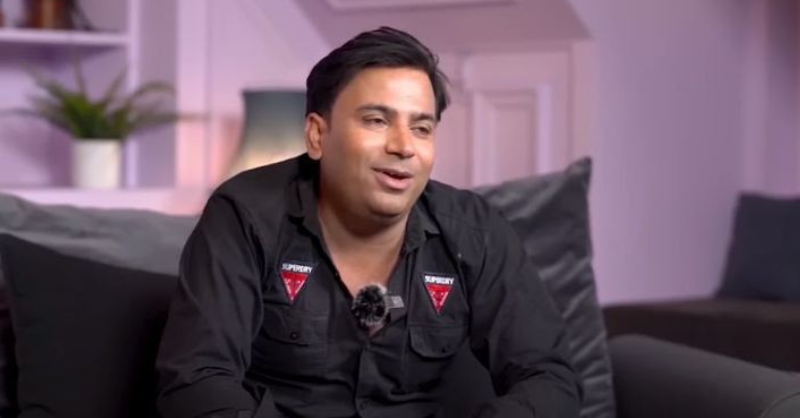
What it takes to make a highly engaging content on Instagram? We have come to accept the fact that we don’t know how a piece of content gets popular. Puneet Superstar is being talked about for his unique content and that makes us wonder, what it takes to be popular on social media?
What combination of actions brought you to read this piece? Was it the algorithm, trends or your frustration over how everything can be called content these days. Take a look at your Instagram feed and try to figure out why it all ended up specifically on your explore page. I’m not against the exposure and opportunities social media brings for people but why is my feed all about food edits, GWRM, ASMR video and why do they make me want to keep scrolling for hours?
How content creation became a thing?
There were days when expressing, creating and sharing was only limited to a smaller group of elites but the vastness of the internet sure revolutionized the way people think, create and express. One of the first forms of digital content included blogs that became really popular around 1999 when publishing sites like LiveJournal came into picture. In 2002, LinkedIn was launched and became popular for providing professionals a platform to connect and communicate. Then we saw the launch of platforms that were more into informal conversations like MySpace and Facebook. The real revolution of content creation happened when YouTube was launched and became the first to offer monetary benefits to creators through its monetisation policy. People could make their own content and share it somewhere where people can watch it and it all felt liberating as now, expressing ideas wasn’t limited to ones who are privileged with the resources. Then we saw the rise of TikTok and the culture of short video content it brought. It gave everyone a chance to become a creator and in the process, bridged many social and economic gaps.YouTube is known for its long content format and thus, posting content on YouTube often takes more time, resources and planning. Comparatively, the effort you need to put to post a short form content is less most of the time. The popularity of social form content was so overwhelming that no social media platform could ignore the possibilities with it and the same thing goes for Instagram. A platform made for picture sharing is doing everything else. TikTok gave rise to influencer culture in India and now almost everyone wants to do it.
How is the popularity of content determined?

Scroll through Instagram Reels and see the content that is there. Ask yourself, if you needed or wanted to see this. You saw the like count and views and can’t figure out why this piece of content has this much engagement? We usually don’t get to see much engagement on well researched pieces while more frivolous and superficial content, such as “Get ready with me” videos, gains overwhelming popularity You must have seen fashion and beauty influencers taking the center stage on big events while we don’t get to see many creators do that from the niches that are not glamorized enough. While I have no hate against the influencer culture, this disparity undermines the value of diligent research, creativity, and meaningful contributions, creating a sense of disappointment among those who strive to present something truly worthwhile to the online community.
Why is Puneet Superstar so popular?
Back to the question of Why Puneet Superstar has the popularity he has. Puneet Superstar’s content includes, screaming challenges, bathing in mud, smearing toothpaste on face, his “Kothi Bangle” and “Nalle Barozgaar Chhapri” Jokes and the list goes on. While we find him making the best out of his crazy ideas, we cannot understand why are we watching it? Recently, Lord Puneet was seen in Big Boss OTT as a contestant. Surprisingly he was eliminated within a day but the hype he created was here to stay. Social media was flooded with comments and posts supporting the savagery of Puneet Superstar as he showed confidence in himself. Why a well-known show starts another segment for OTT and calls social media influencers as contestants?

People have started to root more for social media influencers than Bollywood celebrities. To some extent, we see ourselves in these people and we find them relatable. You must have seen those reels where people from rural areas are making short skits and people do watch and share such content. Anyone from any background can create something and share which has bridged a social and economic gap for so many. A few years back, some content creators normalized the use of cuss-words in comedy and how people liked the idea of it confuses us. Nowadays, a genre of content that people like to call “cringe” or “cliche” has taken over. Such trends bring us back to the same question, “what can be classified as content on social media?”
Also Read: The Paradox of choice: How more choices can make it harder to choose
Business
France’s Reckoning With Ultra-Fast Fashion: Why Shein Is at the Center of a Larger Conversation?
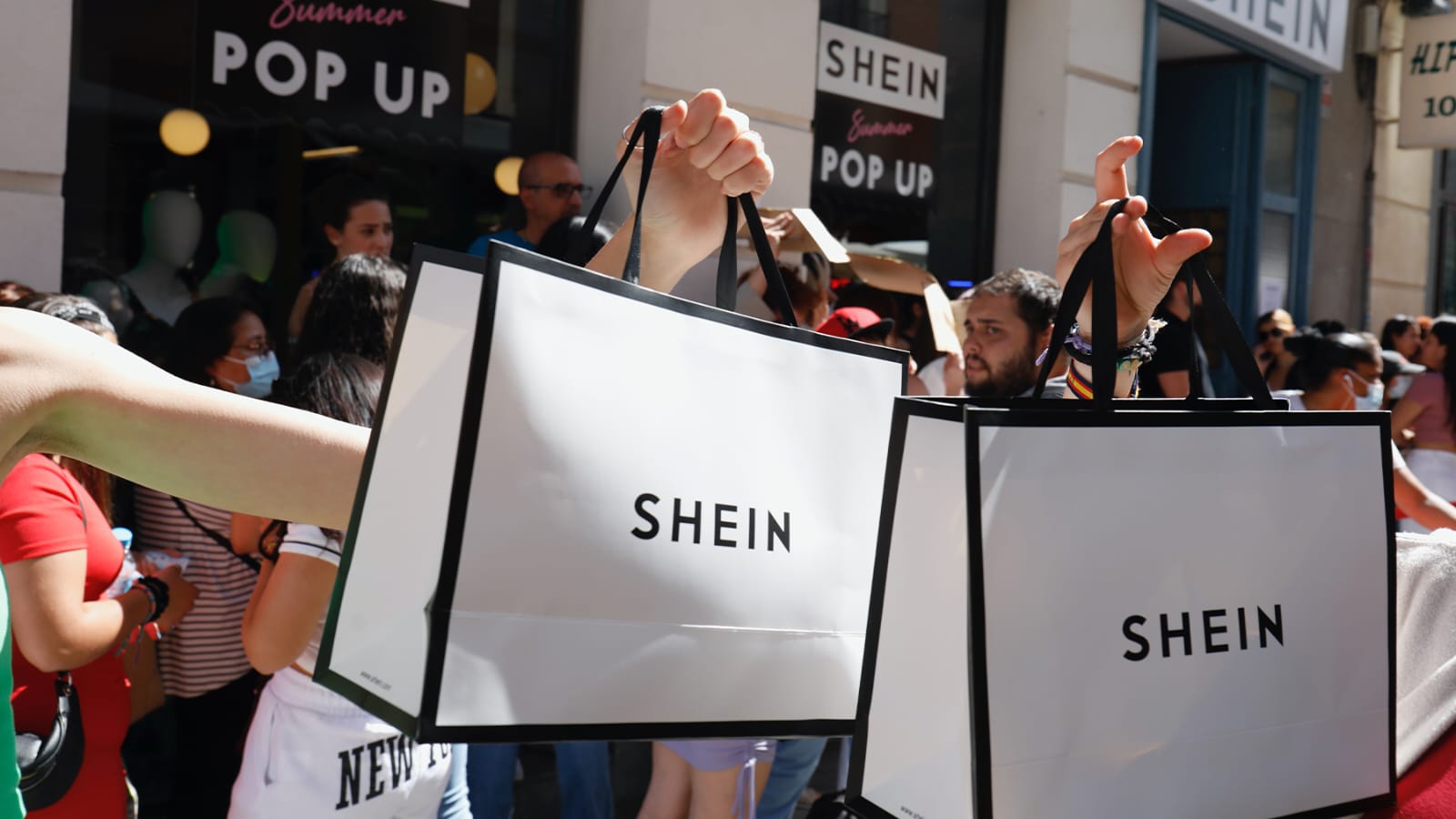
There appears to be a quiet yet undeniable shift underway in how nations are beginning to reckon with the fashion industry, particularly the segment that thrives on speed, relentless volume, and the seductive promise of impossibly low prices. In 2025, France has emerged as one of the first major economies to confront this hyper-accelerated model head-on, not merely by issuing fines or launching investigations, but by challenging the very system that enables it. At the center of this reckoning stands Shein, the Chinese retail juggernaut that has become synonymous with algorithm-driven production. Yet, what makes this moment in France especially significant is not only the legal action being taken against a single company, it is the broader cultural and ethical inquiry being posed. With growing urgency, the country seems to be asking whether we can continue to dress ourselves at this breakneck pace, cloaked in convenience and novelty, without confronting the environmental, human, and psychological costs that are too often obscured by polished interfaces.
€40 Million Fine for Misleading Practices
In July 2025, France’s Directorate General for Competition, Consumer Affairs and Fraud Control (DGCCRF), the country’s principal consumer protection authority, levied a €40 million fine against Shein, marking one of the most high-profile regulatory actions yet against a fast fashion giant. The fine followed an extensive investigation conducted between October 2022 and August 2023, which uncovered a pattern of misleading business practices at the centre of Shein’s digital storefront. More than half of the discounts promoted on its website were found to be deceptive, offering no tangible benefit to the consumer, while others relied on inflated original prices to manufacture the illusion of savings. Even more concerning to regulators were the company’s sustainability claims: bold assurances of a 25% reduction in greenhouse gas emissions and microfiber pollution were, as the DGCCRF concluded, entirely unsubstantiated and unsupported by verifiable data. Though Shein, through its European subsidiary Infinite Style Ecommerce Co Ltd (ISEL), accepted the penalty and claimed to have implemented corrective measures by May 2023, the underlying message from French authorities rang louder than any corporate statement.

Proposed Legislation Signals a Larger Shift
While the €40 million fine made headlines, it represents just one facet of the mounting scrutiny Shein now faces in France. In June 2025, the French Senate took a more structural approach by passing a groundbreaking bill that, if enacted, could fundamentally alter the way ultra-fast fashion brands operate within the country. At the centre of this proposed legislation is an eco-contribution tax. The bill also lays out stringent new requirements for sustainability reporting, alongside tough advertising regulations that aim to limit visibility for brands that fail to meet clear environmental standards. One of the most notable implications of the legislation lies in its potential to curtail influencer-led marketing strategies, a pillar of customer acquisition for companies like Shein that rely heavily on social media virality and affiliate promotions. Although advocacy groups have raised concerns about a perceived disparity in how European retailers, including Zara and H&M, are being treated under the same regulatory lens, the passage of this bill signals something deeper. It reflects a growing legislative will to confront not just the ecological toll of ultra-fast fashion, but also its broader cultural, ethical, and economic footprint, raising the question of whether the era of unchecked consumerism is nearing its limits.
The Environmental Impact Can’t Be Ignored
One of the driving forces behind the intensified scrutiny Shein now faces lies in the sheer scale of its environmental impact, an impact that reflects not only the brand’s rapid growth but also the systemic problems embedded within the ultra-fast fashion model. The fashion industry as a whole is already responsible for an estimated 10 percent of global carbon emissions, and Shein’s contribution to that figure is anything but marginal. In parallel, French authorities have flagged more than 700 Shein products for failing to adequately disclose environmental risks, particularly those related to microfiber pollution which is an increasingly urgent concern as microplastics continue to infiltrate aquatic ecosystems and public water systems. Beyond environmental violations, the company also remains entangled in serious allegations of labor abuses, including reported connections to forced labor in China’s Xinjiang region, which have only amplified the demand for a more enforceable supply chain transparency. Taken together, these issues have not only galvanized French regulators but are also prompting broader conversations across the European Union about whether the time has come to rein in the unchecked dominance of platforms that have long operated at the intersection of convenience, opacity, and cost-cutting excess.
EU Expands Regulatory Focus on Digital Fashion Platforms
The regulatory pressure mounting against Shein is no longer confined to France alone. The company is now being closely scrutinized at the European level, where its practices are being examined under the framework of the European Union’s Digital Services Act (DSA). In July, French Trade Minister Véronique Louwagie confirmed that formal investigations had been initiated to determine whether Shein is deploying so-called “dark patterns”. These tactics, while not always illegal, are increasingly seen as ethically questionable, especially when used at the scale and speed that Shein commands. The European Commission has already expressed concern over misleading pricing strategies and a general lack of transparency in the platform’s operations, signaling that the company may soon face regulatory consequences that extend well beyond French jurisdiction. What initially began as a case rooted in consumer rights has turned into a far-reaching conversation about digital ethics, platform accountability, and the environmental consequences of unchecked e-commerce, placing Shein at the center of a growing movement to hold digital-first fashion retailers to a higher standard of responsibility.
The Reaction: Divided but Loud
The public reaction to France’s regulatory moves against Shein has been swift, impassioned, and divided, reflecting the complexity of the issues at hand. Many people have welcomed the measures as a long-overdue reckoning for a fashion industry that has long operated in the shadows of overproduction, exploitative labor practices, and environmentally damaging shortcuts. For these voices, the crackdown represents a necessary step toward holding global retailers accountable for the true cost of low-cost fashion. Yet, not everyone sees it that way. Critics of the legislation have expressed concern that such regulations could disproportionately affect low-income consumers, many of whom turn to platforms like Shein for affordable access to clothing and personal expression. Through this lens, Shein can attempt to shift the conversation toward themes of economic inclusion and consumer freedom, portraying itself as a platform that democratizes fashion rather than undermines it. At its core, the debate is about far more than a single company. It is a larger tug-of-war between the urgent need for accountability and the equally pressing question of affordability.
Why This Matters
France’s actions in 2025 are not merely a response to the conduct of a single company but represent a deeper interrogation of the values, compromises, and contradictions that lie at the heart of the global fashion industry. When a country with as much cultural and political influence as France begins to layer financial penalties, proposed eco-taxes, advertising restrictions, and cross-border regulatory cooperation into a cohesive strategy, it signals more than just regulatory intent. It marks the beginning of a broader shift in how we understand fashion’s role in society. The question now is whether brands like Shein will evolve in response to this changing situation or attempt to maintain their dominance through speed, affordability, and mass appeal alone. Just as importantly, it remains to be seen how consumers will react when asked to look beyond the immediate gratification of the checkout page and confront the realities of where, how, and at what cost their garments are made. France may not bring the era of ultra-fast fashion to a halt overnight. But it may well be laying the groundwork for something more enduring.
Also Read: Your Wardrobe Might Be Reflecting a Recession
Follow us for more : Dis_cultured
Pop Culture
Pop Culture Recap: Ed Sheeran Sings Punjabi with Arijit Singh, Tom Felton Returns as Draco Malfoy in Harry Potter and the Cursed Child

From global icons trying something new to internet-breaking moments, here’s everything that had people talking this week.
Netflix and Balaji Telefilms Join Forces for Long-Term Creative Partnership
Netflix has announced a long-term collaboration with Ekta Kapoor’s Balaji Telefilms to develop a range of projects across multiple storytelling formats. The partnership aims to bring fresh, culturally rooted content to audiences, with an untitled series already in advanced development. The collaboration will span Balaji Telefilms, Balaji Motion Pictures, and Balaji Telefilms Digital.
NMACC to Host 3-Day ‘India Weekend’ Celebration in New York This September
The Nita Mukesh Ambani Cultural Centre (NMACC) is set to bring a slice of India to New York City with a three-day cultural event this September. Taking place from September 12 to 14 at Lincoln Center, the event led by Reliance Foundation chairperson Nita Ambani will celebrate the richness of Indian art, culture, and heritage on a global stage.
Tom Felton Returns as Draco Malfoy in Harry Potter and the Cursed Child

Tom Felton, best known for his portrayal of Draco Malfoy in the Harry Potter film series, is making a much-anticipated return to the Wizarding World and this time on stage. The actor is set to reprise his role as Malfoy in the Broadway production of Harry Potter and the Cursed Child, marking his debut on the iconic New York stage.
Set 19 years after the events of Harry Potter and the Deathly Hallows, The Cursed Child follows a new generation of Hogwarts students while revisiting beloved characters from the original saga. Felton’s return as Draco Malfoy offers fans a rare opportunity to see one of the franchise’s most complex characters evolve in a new medium.
Ed Sheeran Sings in Punjabi with Arijit Singh in New Track ‘Sapphire’

Ed Sheeran has taken his love for India a step further by singing in Punjabi for the first time in his new song Sapphire. Teaming up with Arijit Singh, the track blends Sheeran’s signature style with a desi twist.
The video, shot during his India tour, shows Ed exploring local streets, playing football with kids, and visiting iconic spots across the country. There’s also a blink-and-you-miss-it cameo by Shah Rukh Khan that fans loved.
Sydney Sweeney’s Limited-Edition Soap Featuring Her Bathwater Sells Out Within Seconds

In what might be the most unexpected collab of the year, Sydney Sweeney teamed up with Dr. Squatch to launch a quirky new product: a bar of soap made with her actual bathwater. Yes, you read that right.
The soap, cheekily named Sydney’s Bathwater Bliss, dropped online and vanished just as fast, selling out almost instantly. Fans rushed to get their hands on it, causing the website to crash within minutes of launch. The stunt has led to all kinds of reactions online, some amused, some amazed, and plenty of people still trying to figure out if this is peak celebrity culture or just a really clever marketing move.
Enzo Staiola, Beloved Child Star of Bicycle Thieves, Dies at 85
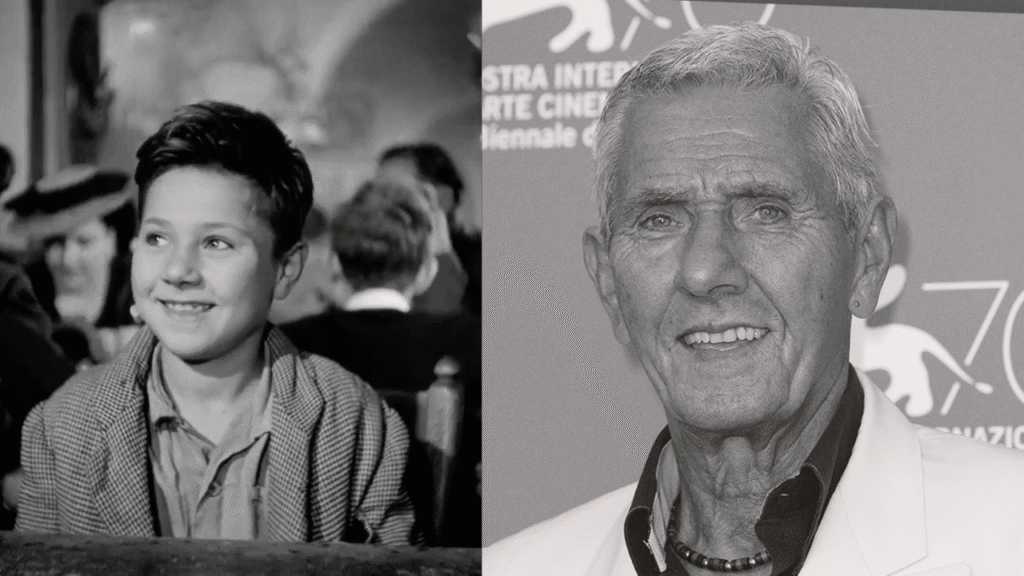
Italian actor Enzo Staiola, best known for his role as the young Bruno in Vittorio De Sica’s classic film Bicycle Thieves, passed away on June 6 at the age of 85.
Bicycle Thieves is widely regarded as a landmark of Italian neo-realist cinema. The film tells the poignant story of a father and son navigating the challenges of post-war society as they search for the father’s stolen bicycle, a vital tool for his livelihood. Enzo Staiola’s performance as Bruno left a lasting impression on audiences worldwide and remains an iconic part of film history.
Also Read: Your Wardrobe Might Be Reflecting a Recession
Follow us for more : Dis_cultured
Fashion
Your Wardrobe Might Be Reflecting a Recession

Here are some fashion trends that have historically reflected economic downturns and are now reappearing in our wardrobes.
In the early 1930s, when the Great Depression took hold, fashion became more practical, and quietly stepped away from glamour. Then, a few decades later, during the oil crisis of the 1970s, something similar happened when people turned to earthy tones, longer skirts, and a more relaxed boho style. And if we look at the recession of 2008, when the world faced another major financial crash, fashion responded yet again with similar trends where loud logos faded, minimalism took over, and people started choosing basics that felt more sensible.

These shifts in style may seem like changing tastes on the surface, but they follow a pattern and that’s no mere coincidence. Fashion, though often seen as frivolous or detached from reality, has always mirrored the social and economic pulse of its time, shifting subtly—or sometimes drastically—in response to the pressures people face. Recession, with its huge impact on spending habits and consumer mindset, has a way of quietly shaping the clothes we wear, the trends we follow, and the statements we choose to make through style. This article explores the fascinating ways in which economic downturns have consistently left their mark on the fashion industry, revealing how style adapts when society is forced to rethink its priorities.
Minimalism and Quiet Luxury

Throughout history, economic downturns have often prompted a return to minimalist fashion, and 2025 is no exception. As recessionary pressures mount, consumers are increasingly drawn to quiet luxury, an aesthetic defined by clean lines, muted tones such as beige, black, and off-white, and logo-free designs that convey sophistication with subtlety rather than flash. This preference stems not only from a desire for elegance but also from practicality: high-quality, versatile pieces offer greater value when budgets are tighter.
This trend isn’t new. After the 2008 financial crisis, Phoebe Philo’s work at Celine became emblematic of the minimalist movement, resonating with audiences seeking calm and refinement in uncertain times. Fast-forward to today, and shows like Succession have reintroduced the concept of quiet luxury into the cultural conversation, highlighting understated affluence over flashy displays of wealth. In 2025, this growing preference also speaks to a broader societal shift that is valuing longevity, subtlety, and authenticity over rapid consumption and conspicuous branding.
Longer Hemlines (The Hemline Index)
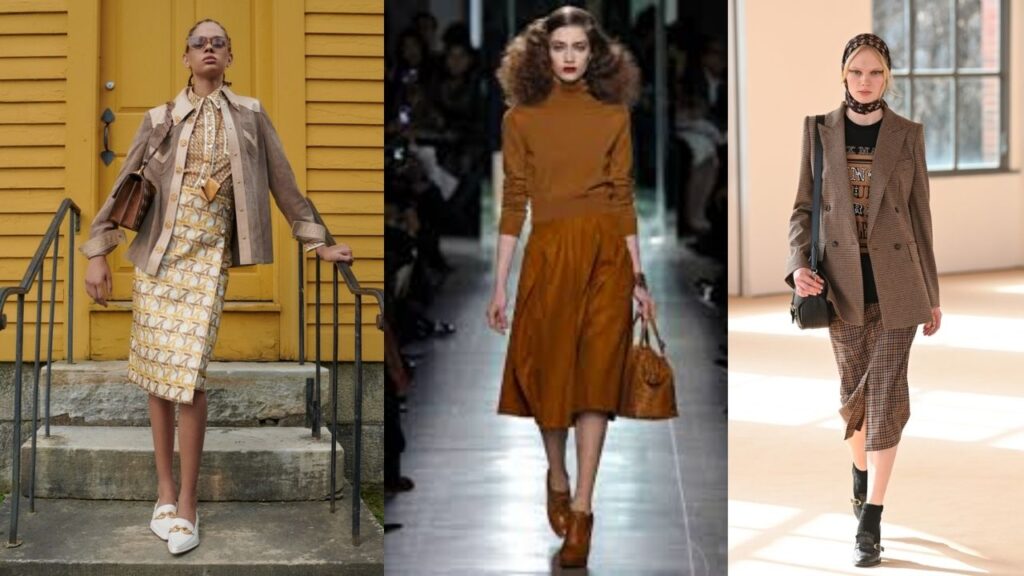
The “hemline index” is a theory suggesting that skirt lengths tend to fall during tough economic times and once again, it appears relevant. Maxi and midi skirts have seen a massive resurgence. Historically, longer hemlines during downturns, such as during the Great Depression and post-2008, reflected a shift toward modesty and practicality. Covered silhouettes offered more versatility and durability, catering to a mood of caution and restraint. While it’s important to note that fashion doesn’t follow the hemline theory religiously (for instance, the prosperous 1950s also favored longer skirts), the broader pattern remains: in times of economic hardship, consumers gravitate toward styles that feel stable, sensible, and enduring.
Indie Sleaze and Nostalgic Revivals
At the other end of the style spectrum, the gritty, chaotic aesthetic of early-2000s “indie sleaze” has roared back to life. Characterized by skinny jeans, distressed layers, slip dresses, messy eyeliner, and an overall DIY spirit, indie sleaze appeals to those longing for a less polished, more rebellious era.
During past downturns, notably post-2008, similar nostalgic trends offered emotional refuge, allowing people to romanticize periods of past turbulence as simpler or freer times. In 2025, cultural moments like Lady Gaga’s punk-era revival in Mayhem have propelled this style back into the spotlight. Indie sleaze’s appeal lies not just in nostalgia but in its affordability and individualism, providing a low-cost way to express personal style amid broader economic anxiety.
Underconsumption-Core and Thrifting
Another major behavioral shift in 2025 is the rise of “underconsumption-core” which is a conscious effort to minimize buying, embrace secondhand shopping, and find new ways to reuse and repurpose existing wardrobes. Social media platforms have become hubs for thrift hauls, “shop your closet” challenges, and DIY upcycling tips.
This trend harks back to post-2008, when resale platforms like Depop and Poshmark flourished. Today’s version is even more value-driven and sustainability-focused, reflecting growing awareness of both economic and environmental crises. Underconsumption-core speaks to a new ethos: style doesn’t have to come at the cost of the planet or one’s wallet. Instead, creativity, resourcefulness, and personal storytelling become the real markers of fashion credibility.
Peplum Tops

Peplum tops, featuring a distinctive flared ruffle at the waist, are another silhouette making a comeback in 2025. Historically, peplums have emerged during or after economic crises, giving a subtle flourish in otherwise streamlined wardrobes. Christian Dior’s iconic New Look post-World War II, with its cinched waists and voluminous skirts, embodied a similar balance between optimism and austerity. Following the 2008 financial crisis, peplum tops once again found favor for their ability to add flair without extravagance. Today, designers like Ashlynn Park are reintroducing them with modern updates like cleaner cuts, lighter fabrics, and a focus on functionality. Their resurgence signals cautious optimism: consumers are ready for a bit of fun in their fashion choices but still value practicality and versatility over flamboyant splurges.
Recession Blonde (and Low-Maintenance Beauty)
The idea of “recession blonde” was coined on TikTok and it reflects the broader beauty shift toward low-maintenance routines in tight economies. Rather than frequent salon visits to maintain a perfect platinum hue, consumers are embracing darker roots, more natural shades, and cost-effective color treatments like glosses.
This mirrors a broader pattern seen after the 2008 crash, when consumers pared back spending on professional beauty services. In 2025, stylists are seeing a surge in requests for “lived-in” color and treatments that extend the time between appointments. It’s a subtle but telling sign of how recessions reshape beauty norms, prioritizing authenticity and affordability over constant upkeep.
Conservative Silhouettes and Muted Colors
Along with longer hemlines, conservative silhouettes including high necklines, long sleeves, and relaxed, layered fits are regaining ground in 2025. Colors, too, are shifting toward muted, earthy palettes like warm browns, charcoal grays, olive greens, and soft neutrals. This isn’t purely aesthetic. Practicality underpins the trend. Muted, conservative pieces tend to mix and match easily, transition across seasons, and outlast fleeting fads, offering greater long-term value. In previous recessions such as the post-1929 crash and post-2008 recovery, similar trends emerged, reflecting a societal mood of prudence and introspection.
Business Casual and Corporate-Inspired Looks
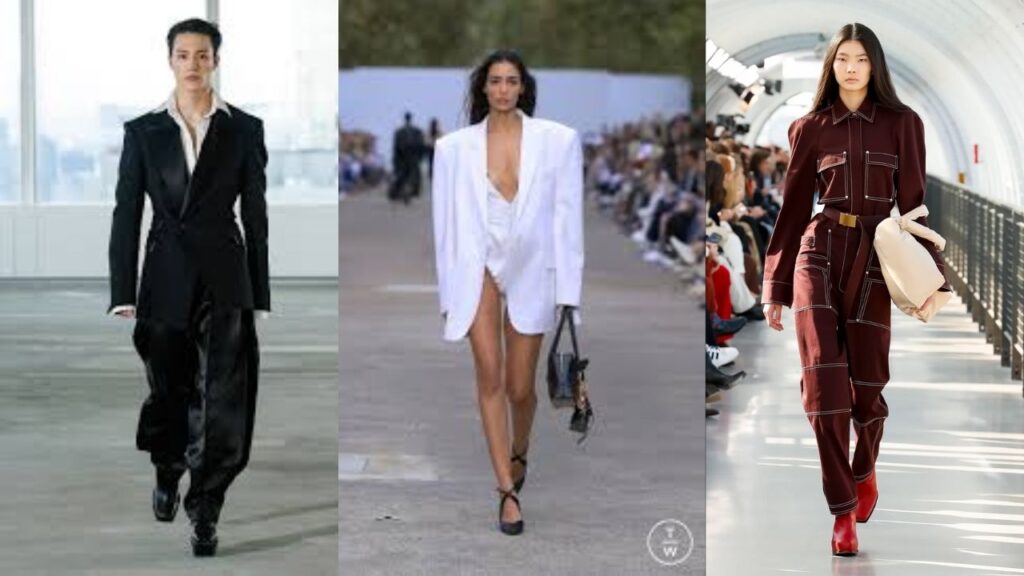
Economic uncertainty also influences how we dress for work and beyond. During recessions, there’s often a resurgence of business casual and corporate-inspired looks, where tailored blazers, wide-leg slacks, crisp shirts, and structured dresses dominate. Dubbed “officecore,” this trend blends professional polish with enough versatility to transition seamlessly from boardrooms to brunches. The early 2010s, following the Great Recession, saw a similar phenomenon, with young adults embracing sharp corporate styles even in nightlife settings. In 2025, designers like Stella McCartney and Peter Do are reviving this spirit but with a twist: reimagining traditional suiting with relaxed cuts, gender-fluid tailoring, and unexpected fabric choices. Officecore today is less about rigid formality and more about smart, adaptable dressing — reflecting a world where professional and personal lives blur, and consumers seek clothing that maximizes both style and function.
High Heels (The High Heel Index)
The so-called “high heel index” is a theory that heel heights rise during the initial stages of economic downturns remains a fascinating, if imperfect, indicator. In the early months of recessions, bold fashion statements, including dramatic heels, sometimes flourish as acts of sartorial defiance or escapism. This was observed at the onset of the Great Depression, though as hardships deepened, comfort and pragmatism took hold.
Also Read: The Questionable Use of the Idea of Feminism as a Marketing Ploy Across History
Follow us for more : Dis_cultured
-
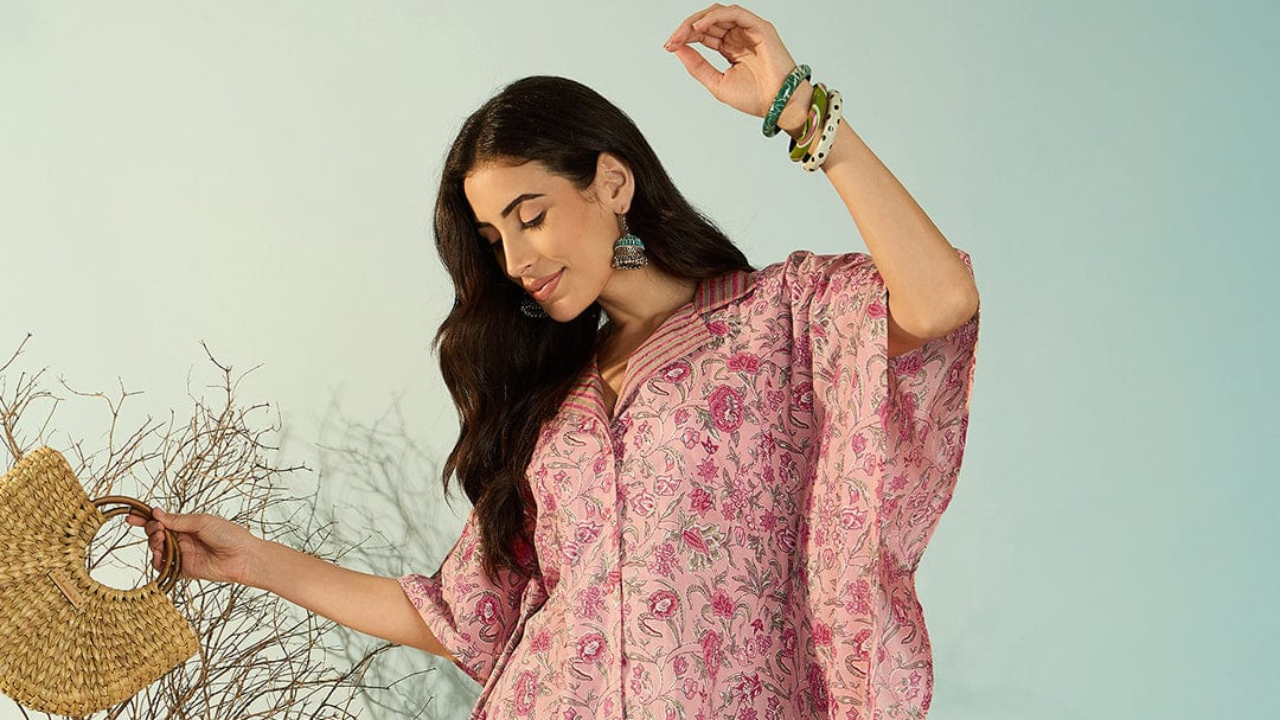
 Beauty12 months ago
Beauty12 months agoKaftans: The New Festive Staple Taking Over Indian Wardrobes
-

 Fashion12 months ago
Fashion12 months agoThe NOU Walk Of Life : New Talk of Town in Luxury Footwear
-
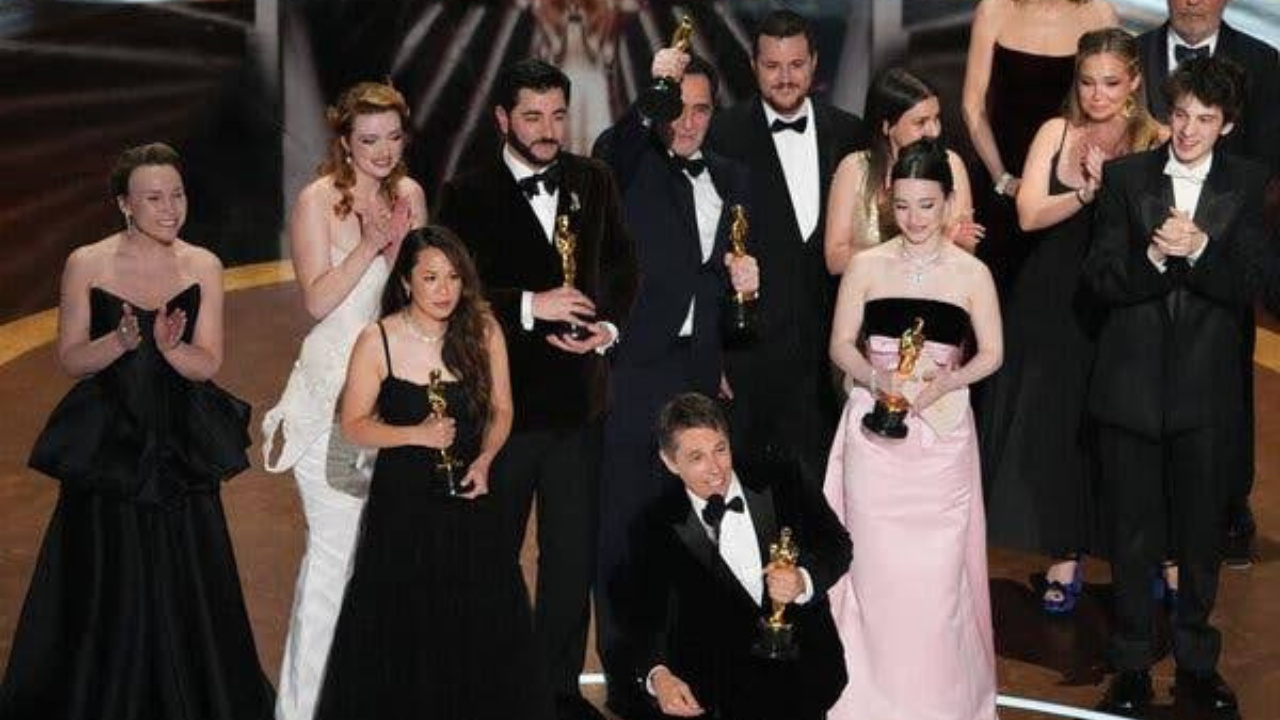
 Events8 months ago
Events8 months agoThe Most Memorable Highlights from the 2025 Academy Awards
-
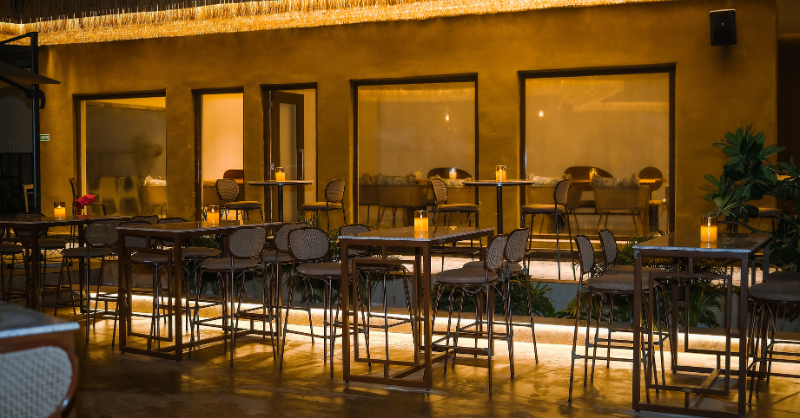
 Events11 months ago
Events11 months agoDorsia, Gurgaon’s One Of The Biggest BYOBs
-

 Events10 months ago
Events10 months agoWeekly Pop Culture Recap: Talkworthy Highlights from the 82nd Golden Globes Awards, Disney’s Merger with FuboTV and Much More
-

 Fashion6 months ago
Fashion6 months agoYour Wardrobe Might Be Reflecting a Recession
-

 Social9 months ago
Social9 months agoMeta Phases Out Fact-Checking and Adopts a Community-Driven Approach similar to X
-
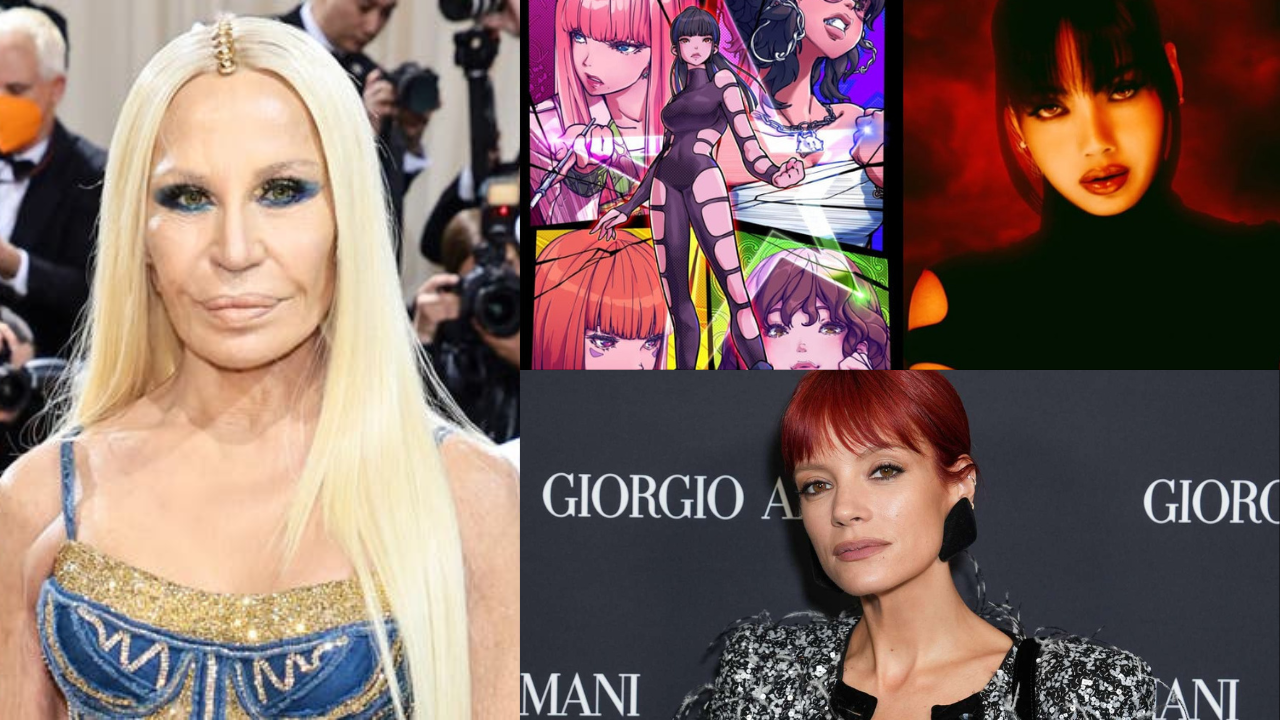
 Fashion7 months ago
Fashion7 months agoWeekly Pop Culture Recap: Donatella Versace has resigned as Versace’s Chief Creative Officer, BLACKPINK’s Lisa is branching out with her graphic novel, ALTER-EGO.











Pingback: Why did the cast of Oppenheimer leave the London premiere midway? - Discultured